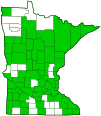musk thistle
(Carduus nutans)
Overview • Description • Distribution • Taxonomy
Description |
Musk thistle is a robust, herbaceous biennial plant, meaning it completes its life cycle over two years. In its first year, it forms a low-lying rosette of basal leaves. In the second year, it produces a tall, erect flowering stalk. The plant typically reaches a height of 2 to 6 feet (0.6 to 1.8 meters), though individual plants can be shorter or taller depending on environmental conditions. The stalk is generally branched, especially in the upper half, and is characterized by spiny wings running longitudinally along its length. The basal leaves are large, deeply lobed, and spiny, forming a prominent rosette at the base of the plant. They can be up to 12 inches (30 cm) long. The stem leaves are alternate along the stalk, progressively smaller higher up the stem, and similarly lobed and spiny. They are sessile, meaning they lack a leaf stalk (petiole), and they run down the stem as spiny wings. The protective structure surrounding the base of the flower head (involucre) is broadly urn-shaped and composed of numerous, overlapping, spine-tipped, modified leaves (bracts). These bracts bend sharply backward as the flower head matures, giving the involucre a distinctive appearance. The flower head is large and solitary, typically nodding or “musking” (hence the common name) as it matures. It is composed entirely of small, tubular flowers (disk florets), ranging in color from rose-purple to deep purple. The florets are numerous and densely packed, creating a showy, often globe-shaped or slightly ovoid flower head that can be 1 to 3 inches (2.5 to 7.5 cm) in diameter. |
Distribution |
||
|
Sources 2, 3, 5, 7, 22, 24, 28, 29, 30. Biodiversity occurrence data published by: Minnesota Biodiversity Atlas (accessed through the Minnesota Biodiversity Atlas Portal, bellatlas.umn.edu, 5/17/2025). Most sources show musk thistle absent or mostly absent from the northwest, north-central, and central parts of the state. EDDMapS and BONAP (light green on the map) show it widespread throughout the state. |
|
| 5/17/2025 | ||
Taxonomy |
|
Kingdom |
|
| Division |
Tracheophyta (Vascular Plants) |
Subdivision |
Spermatophytina (Seed Plants) |
Class |
|
Order |
Asterales (Sunflowers, Bellflowers, Fanflowers, and Allies) |
Family |
Asteraceae (Sunflowers, Daisies, Asters, and Allies) |
Subfamily |
Carduoideae (thistles and allies) |
Tribe |
Cardueae |
Subtribe |
Carduinae (thistles and burdocks) |
Genus |
Carduus (plumeless thistles) |
Cardueae is a synonym of the tribe name. Cynareae was published first and has precedence. Nevertheless, most sources use the name Cardueae for the tribe. |
|
Subordinate Taxa |
|
musk thistle (Carduus nutans ssp. alpicola) musk thistle (Carduus nutans ssp. falcatoincurvus) musk thistle (Carduus nutans ssp. granatensis) musk thistle (Carduus nutans ssp. leio) musk thistle (Carduus nutans ssp. leiophyllus) musk thistle (Carduus nutans ssp. litoralis) musk thistle (Carduus nutans ssp. macrocephalus) musk thistle (Carduus nutans ssp. macrolepis) musk thistle (Carduus nutans ssp. maurus) musk thistle (Carduus nutans ssp. micropterus) musk thistle (Carduus nutans ssp. numidicus) musk thistle (Carduus nutans ssp. nutans) musk thistle (Carduus nutans ssp. perspinosus) musk thistle (Carduus nutans ssp. platylepis) musk thistle (Carduus nutans ssp. platypus) musk thistle (Carduus nutans ssp. scabrisquamus) musk thistle (Carduus nutans ssp. siculus) musk thistle (Carduus nutans ssp. taygeteus) musk thistle (Carduus nutans ssp. trojanus) musk thistle (Carduus nutans var. cossonianus) musk thistle (Carduus nutans var. sporadum) |
|
Synonyms |
|
Carduus lecophyllus Carduus songaricus |
|
Common Names |
|
musk thistle nodding plumeless thistle nodding plumeless-thistle nodding thistle plumeless thistle |
|
Visitor Photos |
||
Share your photo of this plant. |
||
This button not working for you? |
||
Nancy Lundquist |
 |
Alfredo Colon |
||
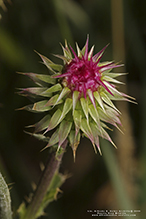 |
||
The Musk Thistle, Carduus nutans, in different phases |
||
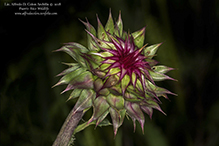 |
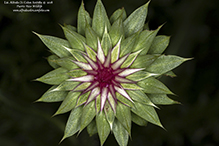 |
|
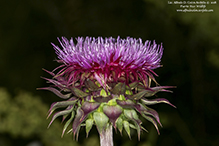 |
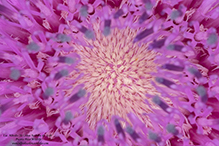 |
|
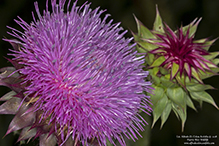 |
||
Laura Baxley |
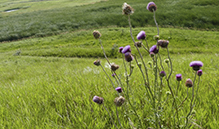 |
MinnesotaSeasons.com Photos |
||
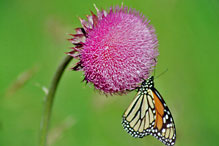 |
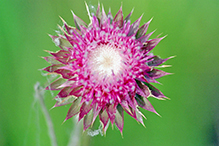 |
|
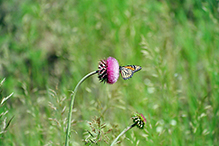 |
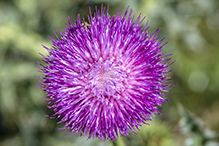 |
|
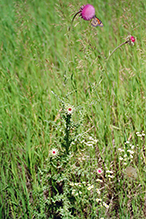 |
 |

Slideshows |
Carduus nutans |
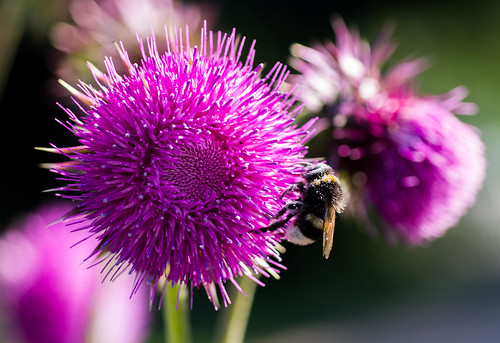
|
About
Nikketistel, Nodding thistle |
Carduus nutans |
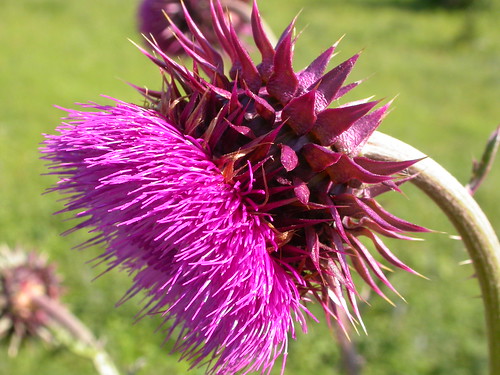
|
About
Introduced annual to biennial herb with stems upwards of 1.5 m tall, the capillary bristles reveal this is not a species of Cirsium and the broad involucral bracts (phyllaries), over 2 mm wide, readily distinguish this species, common in disturbed sites from low elevation to mountain meadows. |

Visitor Videos |
||
Share your video of this plant. |
||
This button not working for you? |
||
|
Other Videos |
||
Nodding Thistle (Carduus Nutans) / Musk Thistle - 2012-06-12 |
About
Published on Jun 14, 2012 The Musk thistle or Nodding thistle (Carduus nutans) is a member of the sunflower family Asteraceae. ------------- |
Weed of the Week #758-Musk Thistle (Air Date 10/14/12) |
About
Published on Oct 17, 2012 It's our Weed of the Week, Musk Thistle |

Visitor Sightings |
||
Report a sighting of this plant. |
||
This button not working for you? |
||
| Alfredo Colon 8/7/2019 |
Location: Woodbury, Minnesota |
 |
| Laura Baxley 7/11/2018 |
Location: Hole-in-the-Mountain Prairie |
 |
MinnesotaSeasons.com Sightings |
||

|
Created: 6/23/2005 Last Updated: © MinnesotaSeasons.com. All rights reserved. |
